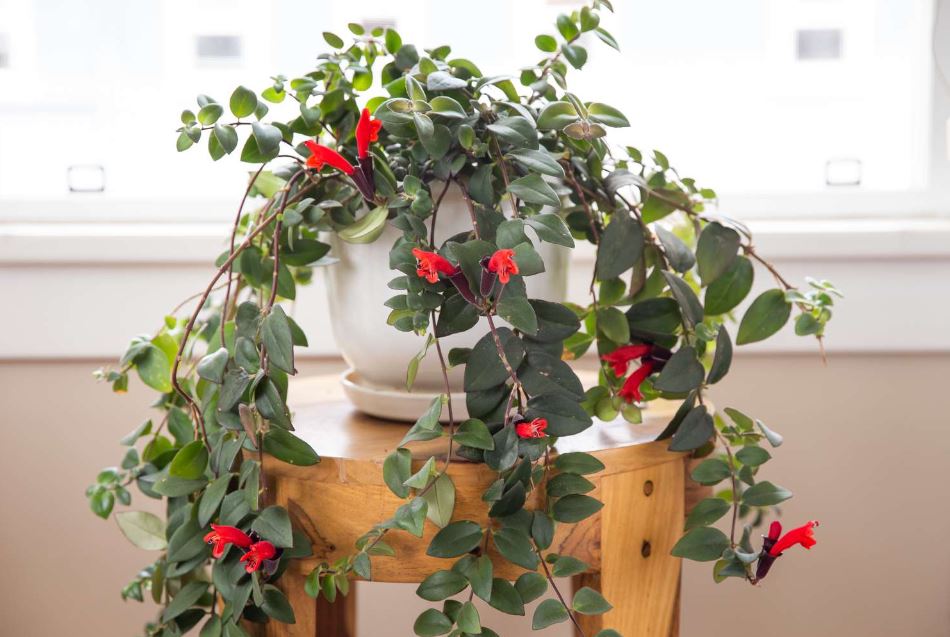
The lipstick plant (Aeschynanthus radicans) is a popular tropical houseplant with tubular red flowers that emerge from a darker casing, resembling lipstick. In its native tropical habitat, this is an epiphytic species found growing from tree branches and cracks in rocks. As a houseplant, it can be grown in hanging baskets due to its cascading nature, or it can be trained to climb if given support. The flowers are pollinated by sunbirds.
This plant is primarily found in countries like Malaysia, Indonesia, Thailand, and other parts of the Malay Archipelago. In these regions, the lipstick plant grows in humid, rainforest environments. It typically thrives in the understory of the forest, where it receives dappled sunlight.
As an epiphyte or sometimes lithophyte, the lipstick plant in the wild often grows on tree branches or rocks, where it can anchor its roots into crevices or the bark, utilizing the moisture and nutrients available from the air, rain, and decomposing organic material around it rather than from the ground soil.
The flowers are tubular, with a bright red color that emerges from a dark purplish-black or maroon calyx, resembling a lipstick tube. Flowers can also come in shades of orange, yellow, or even purple in some cultivars. Flowering can occur throughout the year but is most prolific in the warmer months or when conditions are optimal. It has glossy, green leaves that can be quite thick and waxy. Stems can grow quite long, and they’re semi-woody at the base.
Care Characteristics
- Light: Prefers bright, indirect sunlight. Direct sun can burn the leaves, while too little light reduces flowering.
- Water: Likes consistent moisture but must not be waterlogged. The top layer of soil should dry out slightly between waterings.
- Humidity: Thrives in high humidity; typical indoor humidity might need supplementing with misting or a humidity tray.
- Temperature: Enjoys warm temperatures, ideally between 65°F to 75°F (18°C to 24°C). It can tolerate slightly cooler temperatures at night but should be protected from cold drafts.
- Soil: Requires a light, well-draining potting mix, often one suited for orchids or a general-purpose mix with added perlite or peat for drainage.
- Fertilization: Benefits from regular feeding with a balanced, water-soluble fertilizer during the growing season.
Other Traits
- Pruning: Benefits from occasional pruning to encourage bushiness and remove dead or leggy growth.
- Toxicity: Generally considered non-toxic to humans and pets, making it safe for households with animals or small children.
- Longevity: With proper care, lipstick plants can live for many years, continually producing their characteristic flowers.
- Air Purification: Like many houseplants, it helps in improving indoor air quality, although this isn’t its primary attribute.
Common Issues
- Pests: Watch for common houseplant pests like aphids, spider mites, and mealybugs. Use insecticidal soap or neem oil for treatment.
- Flowering Issues: If the plant doesn’t flower, it might need more light, or it could be too young. Ensure it’s not exposed to drafts or temperature fluctuations.
- Leaf Drop: Can be caused by overwatering, underwatering, or sudden changes in temperature or light.
Propagation
- Can be propagated from stem cuttings. Cuttings should be taken from non-flowering shoots and can be rooted in water or directly in soil.
- Cut a section of stem with at least two leaf nodes. Place it in water or directly into a moist potting mix. Roots should develop in a few weeks. Keep the cuttings in a warm, humid environment until roots are well-established.